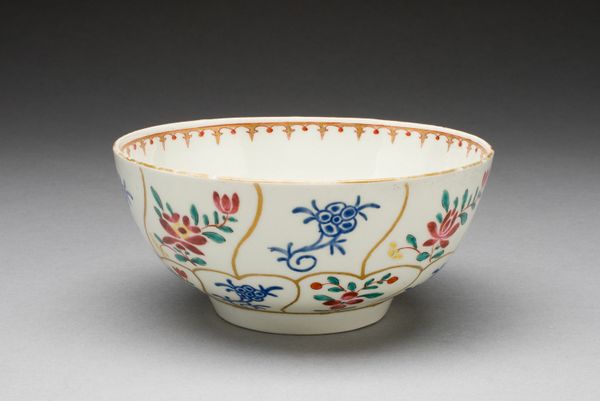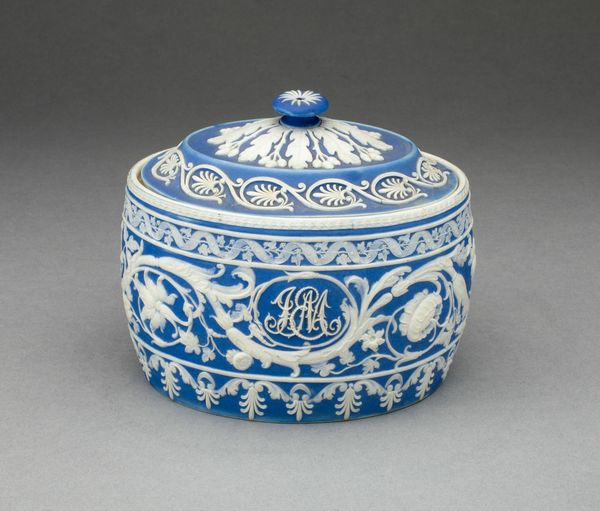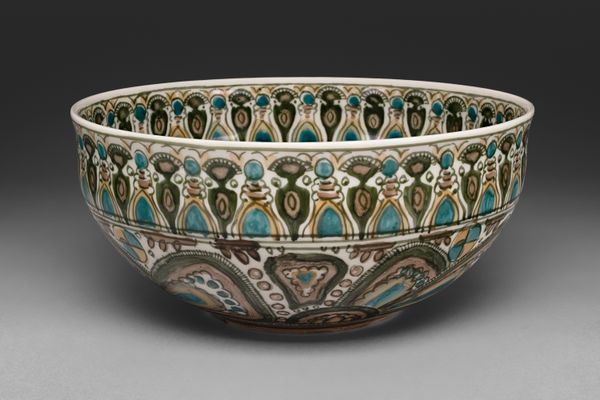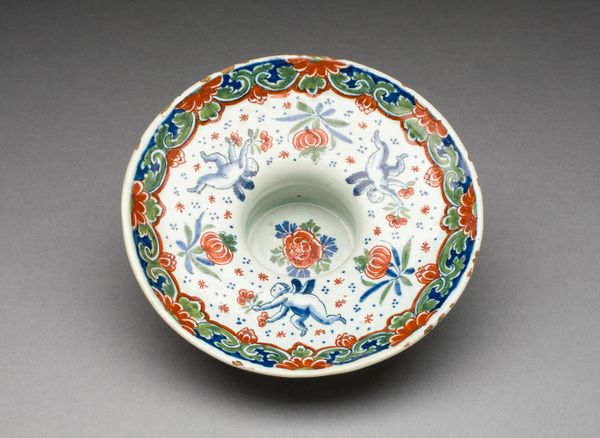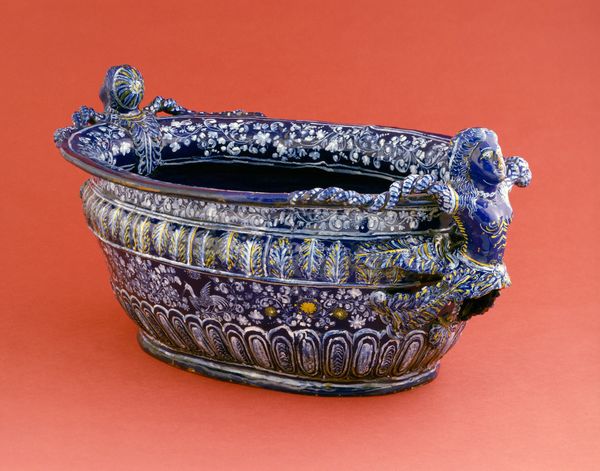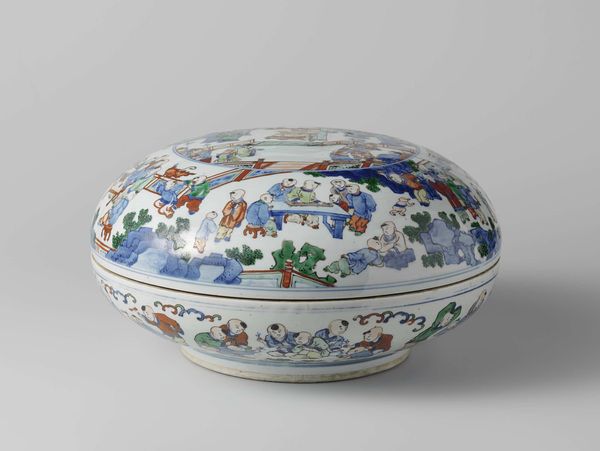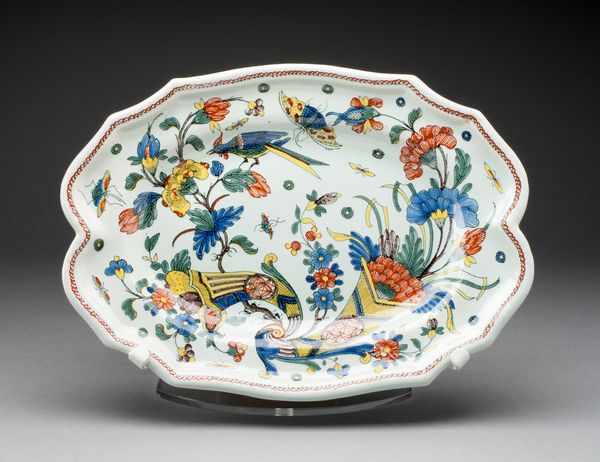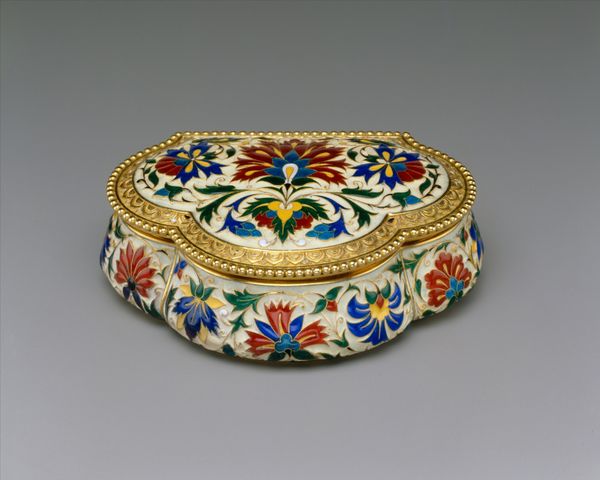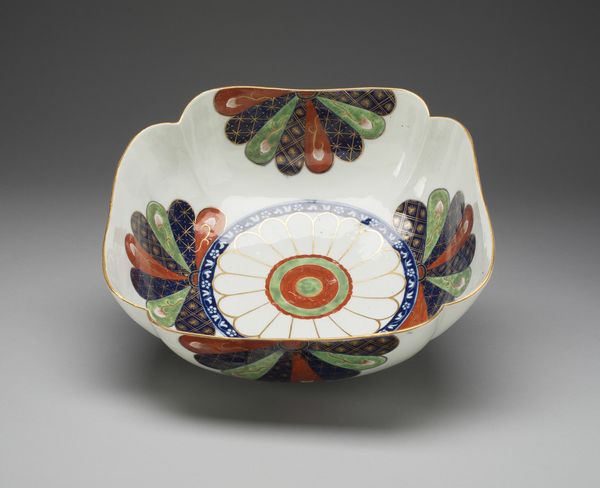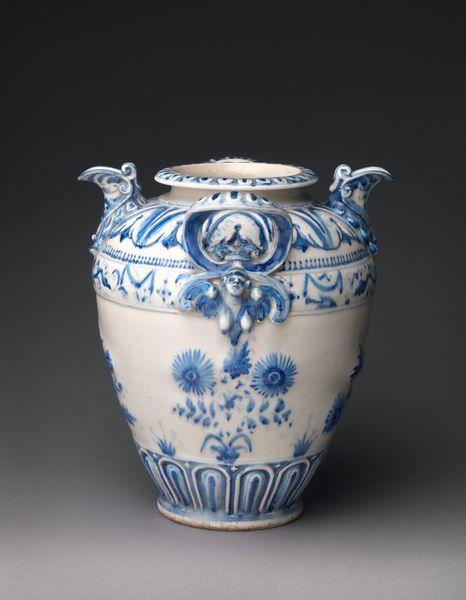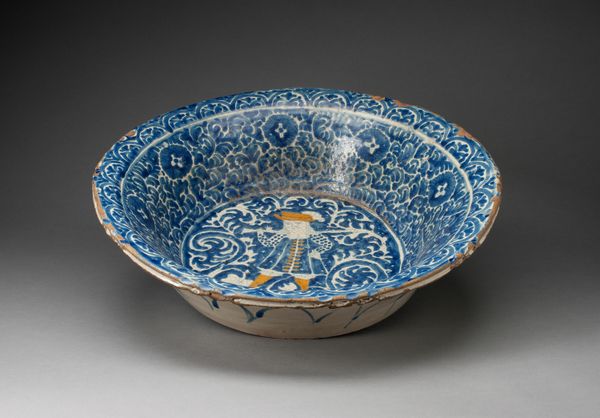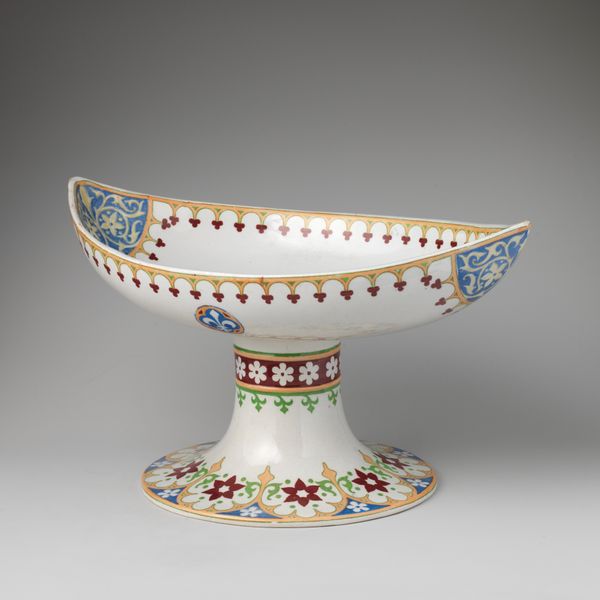
ceramic, earthenware
#
baroque
#
ceramic
#
earthenware
#
ceramic
#
decorative-art
Dimensions: 24.8 × 16.5 × 7.8 cm (9 3/4 × 6 1/2 × 3 1/16 in.)
Copyright: Public Domain
Curator: Take a moment to consider this earthenware Cruet Stand created around 1725 by Rouen Potteries, a striking piece currently residing at The Art Institute of Chicago. Editor: My first impression? It feels surprisingly domestic. There’s an undeniable intimacy in the repeated floral patterns. They suggest home, family, maybe even a well-to-do pantry! Curator: Precisely. Think of the socio-economic context: decorated earthenware like this marked a rising merchant class aspiring to aristocratic taste. We see here the complex process of producing such elaborate objects— the division of labor, from forming the clay to the final firing and glazing. It was certainly not an everyday piece made for a commoner’s table! Editor: The blue and orange palette has some strong associations, doesn’t it? That cobalt blue, used with such frequency here, has a historical link to royalty and divine wisdom in visual language and then you have the floral imagery, very commonly representing different feelings or ideas within society and personal lives. Do you see anything like that reflected here? Curator: Well, the repetition itself tells a story. The consistent replication of motifs points to an industrialized workshop mentality – skilled labor applied repeatedly for uniformity, catering to demand. In this object, high Baroque design is rendered with something approaching factory efficiency. It seems those repeated patterns were more practical than poetic. Editor: I see your point. The repetition dilutes the inherent symbolism of individual flowers, focusing instead on collective harmony. But even in mass production, choice of colors, forms, the placement— those carry psychological weight. Here, I think, it’s about projecting a sense of cultivated sophistication, not pure spiritual meaning. Curator: It’s a complex tension: this beautiful earthenware attempts to mimic fine porcelain or even silverware, with its classical baroque curves. A skilled imitation reflecting the consumer appetite driving workshops like this, catering to both practical needs and aspirational displays of status. Editor: Indeed! In that blend of artisanal process and cultural mimicry, it transcends a mere storage stand to reveal aspirations encoded in objects. Curator: Absolutely! Examining the material reality of an object always reveals so much about its time. Editor: It really highlights how material objects serve as cultural artifacts laden with layers of symbolism.
Comments
No comments
Be the first to comment and join the conversation on the ultimate creative platform.
